Many of us spend most of our time in RV parks. Over the years, my wife Natalie and I have noticed that having and doing certain things when we arrive at a campground helps make settling in easier. After ensuring reservations at your next campground, you might benefit by utilizing the following steps to ensure a hassle-free experience when parking your RV.
Arrive Early
Most RV parks have a check-in time, so arriving earlier than that is not advised. You may, however, want to arrive with plenty of sunlight left. We have found that hooking up, leveling and putting the slides out is always more complicated in the dark, especially in an unfamiliar park. You can take your time and ensure your rig is set up properly by planning to arrive at your site with plenty of daylight left. How early depends on how quickly it usually takes you to set up. For us, it’s about 30 minutes if we are only staying the night and a couple of hours if we are planning to stay for an extended period.
Choose a Pull-through or Back-in Site
Many RV parks will give you the option of whether to have a site you can pull through or a traditional site you back into. Sometimes the pull-through sites are a little more expensive than the back-ins. If you are given the option, consider your parking skill level and length of stay. We drive a motor home and tow a car. Our tow dolly does not allow us to back up. We must take the car off before going into a back-in site. If we are only going to stay a night or two, we usually opt for the pullthrough site because it is more convenient. We don’t mind paying a few extra dollars to do so. If we are going to stay for a week or longer, we will usually save money and settle for a back-in. The important thing is to know which one you would prefer before making the reservation.
View Site Beforehand
My wife is currently working at a KOA, and she has found that those who actually look at their site beforehand tend to have the least problems with parking. So, if it’s possible, viewing the site before parking in it is always a good idea. Every RV site is a little different. There may be low-hanging branches on one side or large obstacles in the way. We have been put in sites that wouldn’t allow us to put our slides out no matter how we parked. We have also been to campgrounds that had sewer hookups and water spigots on the passenger’s side. Knowing these things before you pull into the site will go a long way in positioning your rig. It is not always possible to take a quick walk to your site before pulling into the park. In those cases, it may be a good idea to stop once you get to the site and look around before you back up or pull through. Keep in mind that you know your RV better than the camp host. If you decide a site doesn’t work for you or you will have too many difficulties getting in or out, you can always request another site.
Come Up With a System for Backing Up
We have all seen that couple who gets to an RV site, and one of them gets out and tries to assist the other while backing up, but they don’t have a system for this. The result is one person outside waving their arms around like they’re playing a game of charades. The driver, not understanding the arm waving, must pull forward and try backing up again several times while they both yell at each other. Those situations are sometimes entertaining for other campers, but they can be avoided if you and your traveling partner have a system in place that allows you to communicate. We have seen couples use radios for verbal communication. Our backup camera has a microphone, so whoever is directing in the back can use their voice as well as hand signals. Backing up doesn’t have to involve a whole lot of technology either. A little bit of pre-planning can go a long way. You and your partner should agree upon signals for left, right, come back and stop. As mentioned above, before you even pull into the new site, it is a good idea to decide how the RV should be positioned and what is important to avoid while pulling into that site. At that point, you and your partner both understand the goal, and there is a means of communication to reach it.
Be Vigilant When Backing
Use your mirrors and windows around you to keep an eye out for children, vehicles and other obstacles. Your partner may be focusing on one aspect of the site and fail to notice a low branch that will not clear the roof as well as you thought. A glance in the mirror or hearing the scrape of the first part of the branch may allow you to notice the problem before your spotter does.
Judging Slide-out Space Precision Is Key
Your slide-out is designed to push a rather heavy object out the side of your rig. Generally, slide-outs are powerful enough to do quite a bit of damage if the operator isn’t paying attention to the space surrounding the RV. A second set of eyes outside the RV helps during slide extension. If you don’t have a traveling partner, you can always measure any spaces that look tight before opening the slides.
More Is Better
When it comes to RV hookups, having extralong cords and hoses are always better than the alternative. I have pulled into many RV sites that have the sewer or water hookup 15 and even 20 feet from the electrical box. Knowing this, we carry about 30 feet of sewer and water hose. Make sure you have more than enough electrical cord for the same purpose.
Use a Surge Protector
There are a lot of RV parks that have old electrical systems. When things need replacing, don’t assume that a qualified electrician will be hired for the job. To further that point, I am not an electrician. I have been a camp host at several RV parks and have replaced my share of electrical components. It is safe to speculate that whenever you are about to plug your rig into a power pole, it could be old or wired incorrectly. Using an RV surge protector can go a long way toward keeping you and your RV safe. Many RV-specific surge protectors check the wiring for open grounds and reverse polarity. The expensive ones will shut your electricity off if the voltage gets too low to avoid damage to components such as air conditioner motors and compressors. To use the surge protector and check the wiring, turn the breaker to the “off” position. Plug in your surge protector and flip the breaker to the “on” position. You should be able to read the device’s screen or the series of lights that indicate whether the wiring is correct or not. If all looks good, turn the breaker to the “off” position once again. Plug your RV power cord into the surge protector and turn the breaker back to the “on” position. At this point, you should have power and protection from surges.
Use a Water Pressure Regulator
Water pressure in RV parks can vary. Most RV manufacturers recommend keeping your water pressure at about 40–50 psi. Many RV parks have water pressure above 60 psi. If your RV does not have a pressure regulator built in, then you should get your own; this is another avenue that will allow you to go as expensive or cheap as you want. You can pick up an inexpensive one at Wal-mart for about $8. You can get fancy ones with gauges for about $60 from Amazon.com.
Plan Your Escape
Some RV sites are as challenging to get out of as they are to get into. Once you are all set up, go for a walk around the campground. Use this opportunity to figure out how you are going to exit the park. This little exercise will alleviate any difficulty and confusion when it’s time to leave. Benjamin Franklin famously said, “An ounce of prevention is worth a pound of cure.” Most of these ideas have a common theme of planning ahead. Settling into an RV site won’t be as complicated or stressful when knowing about the problems beforehand and planning accordingly.
Did you like this post? Pin it to Pinterest!
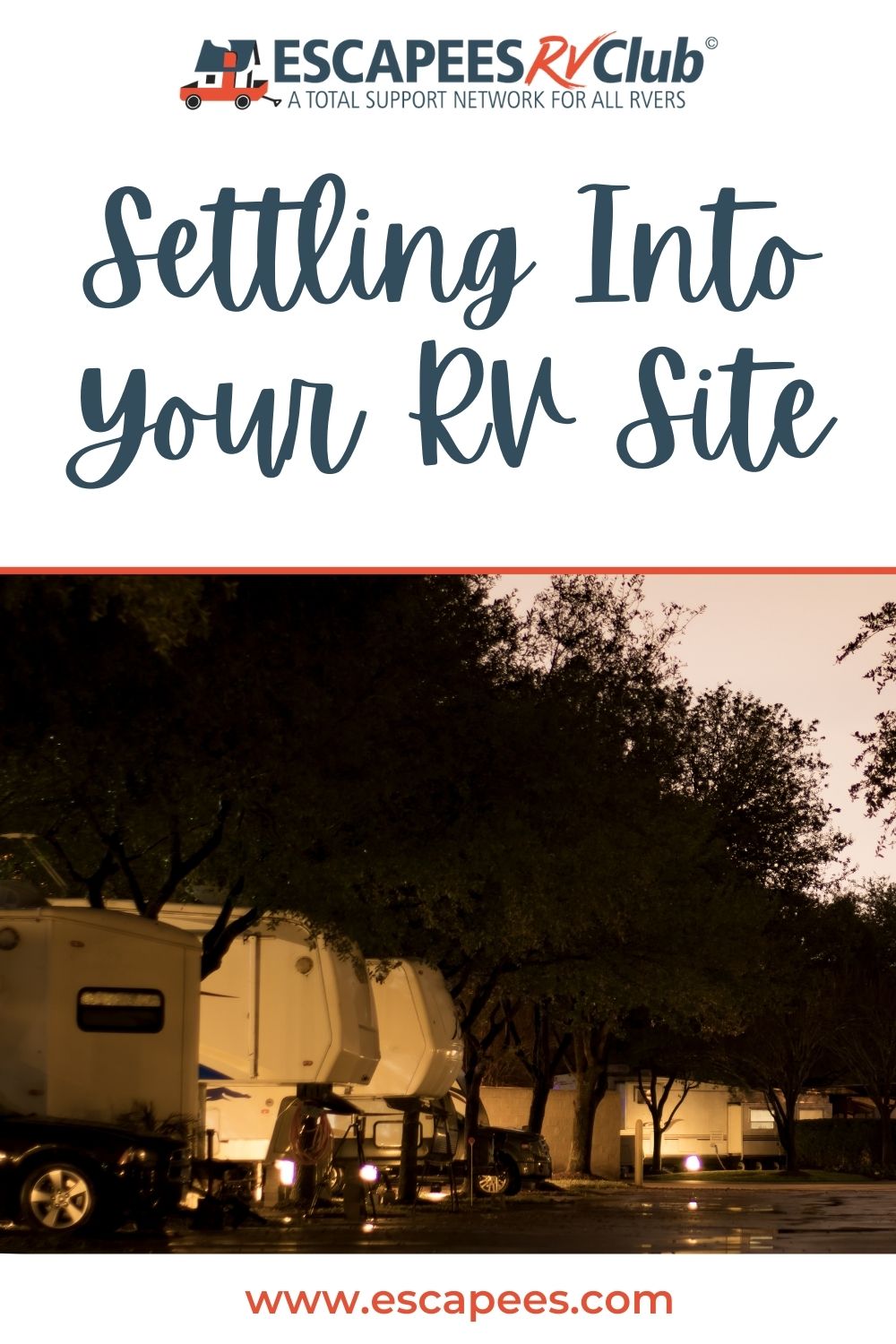

Author
Levi & Natalie Henley
Levi Henley and his wife, Natalie, are a full-time RVing couple. Together with their two cats, they travel around the country in their 2011 Sunstar Itasca seeking work-camping gigs. They share their adventures, seasonal job experiences and travel tips on their website, henleyshappytrails.com.


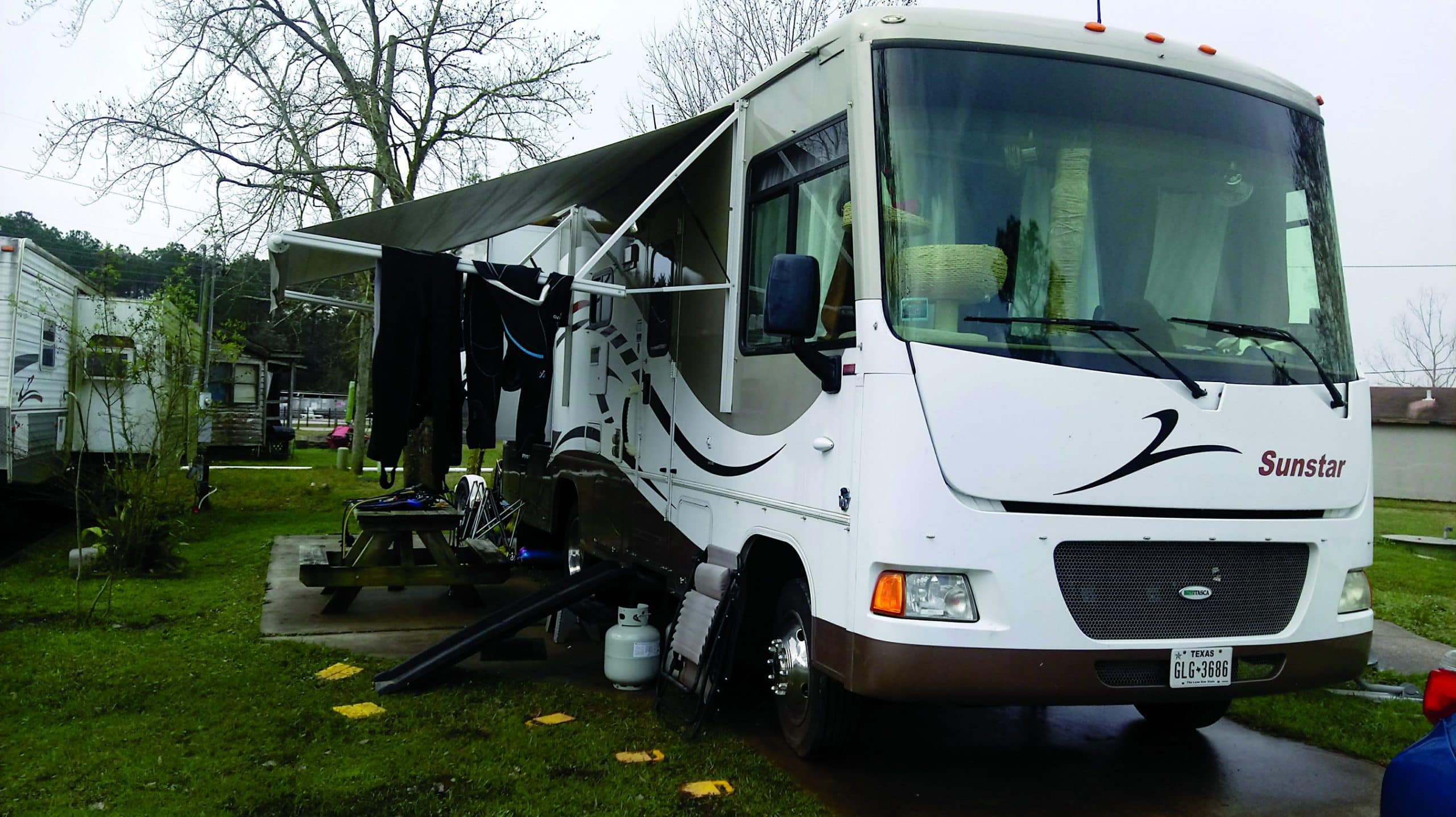
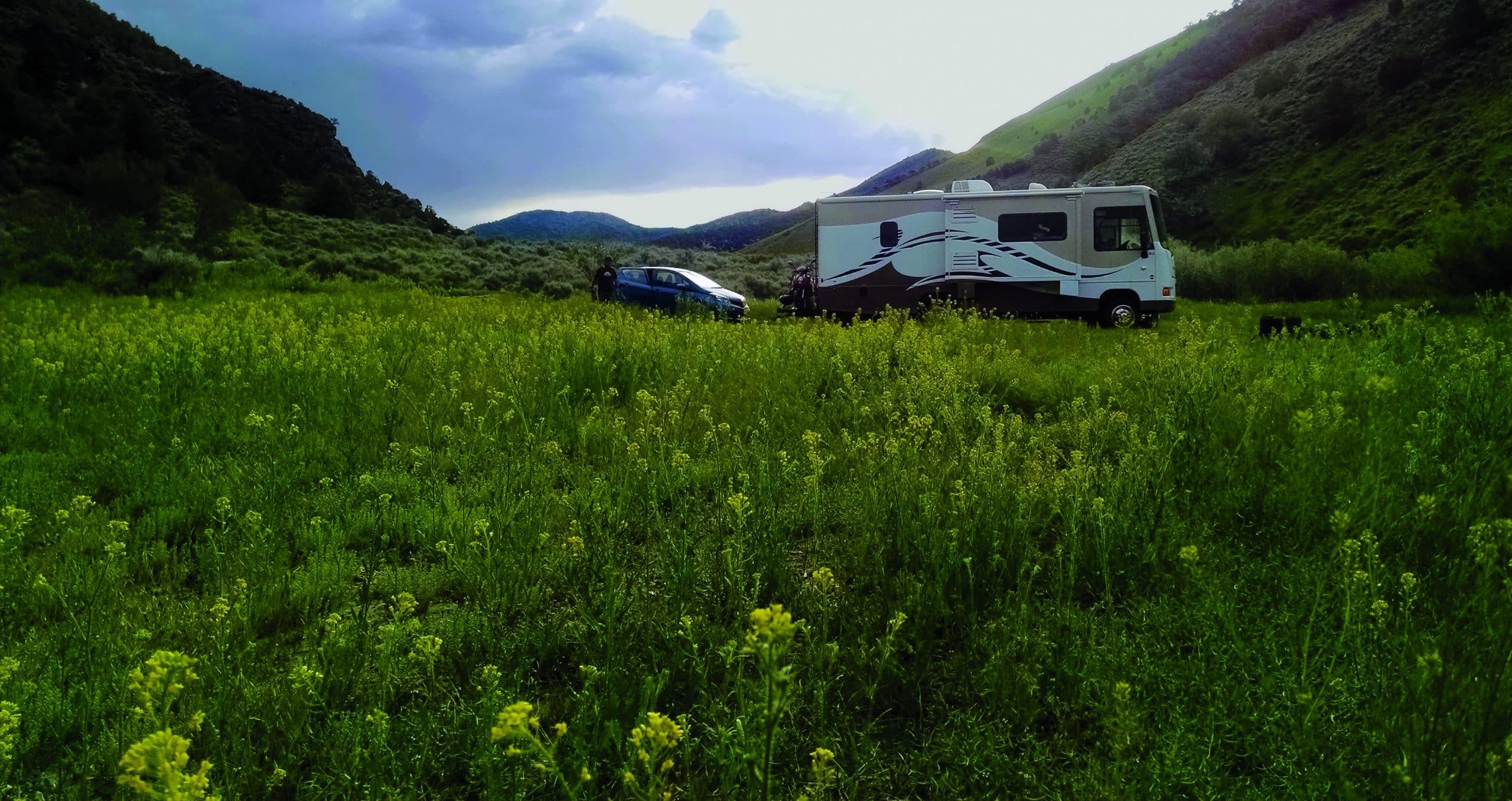


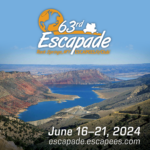

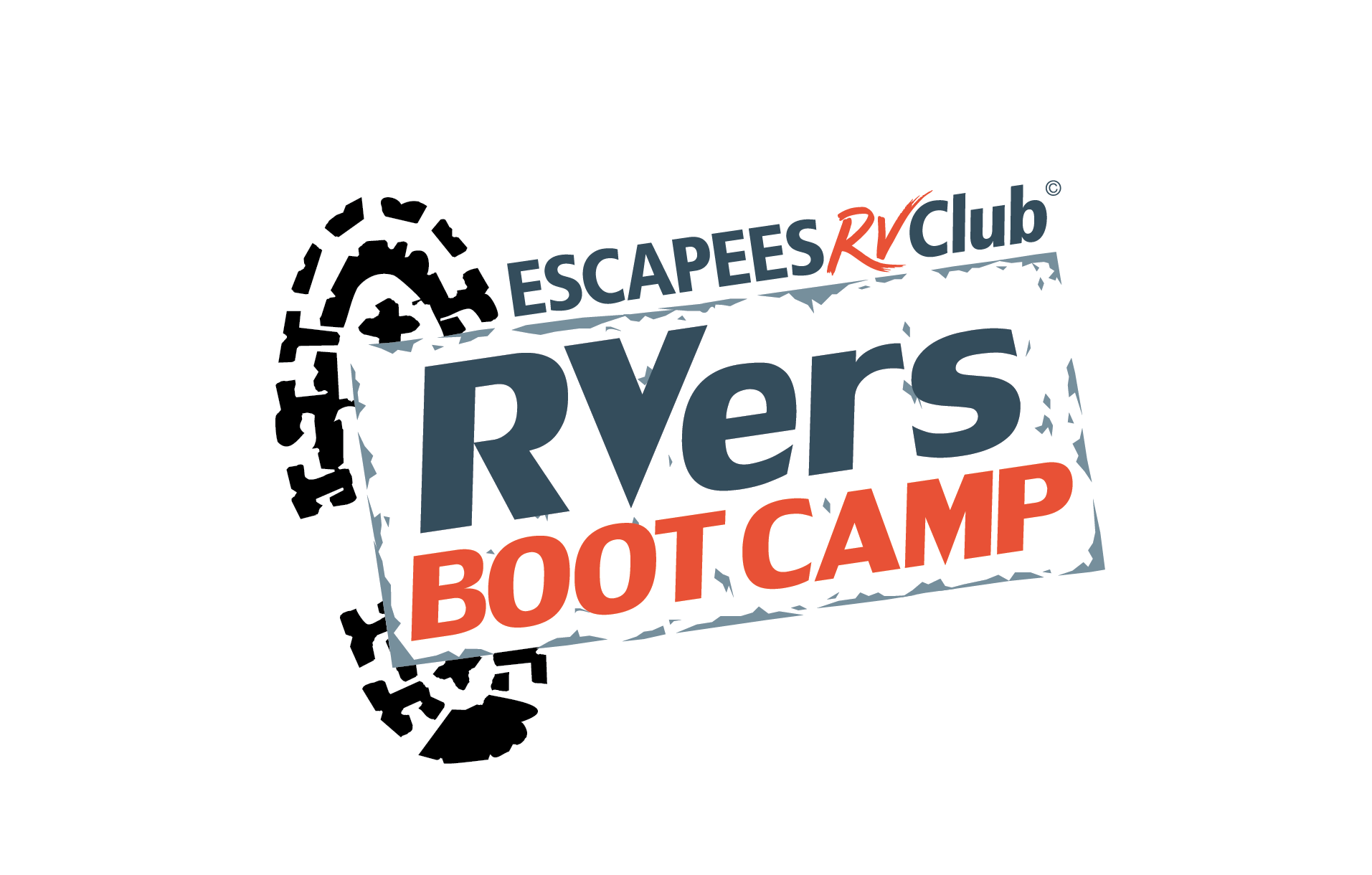


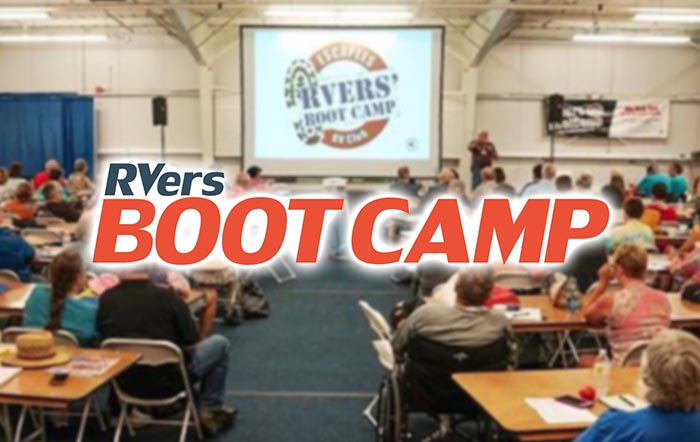
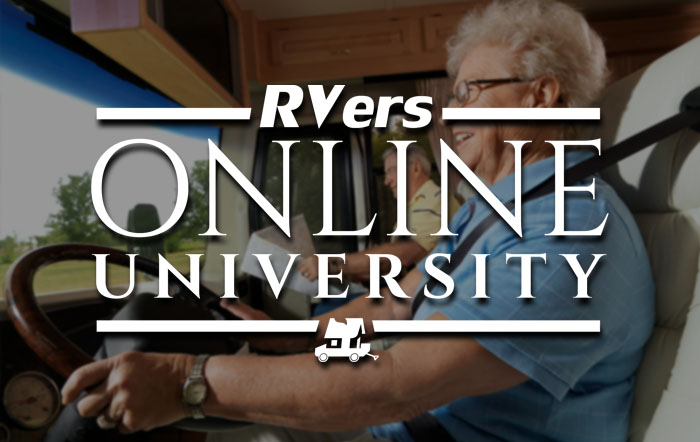

2 Responses
Thank you for this info. Have been camping alone for couple of years so after getting in and out of truck to recheck my backing in I decided to get a rear camera. Spent a little more on it because of the radius it has. Makes backing up a breeze. I do still get out to check out every thing a couple of time. I like reminders.
I’d suggest buying an Autoformer instead of a surge protector. They’re more expensive but most of the problems you have in campgrounds are due to low voltage.